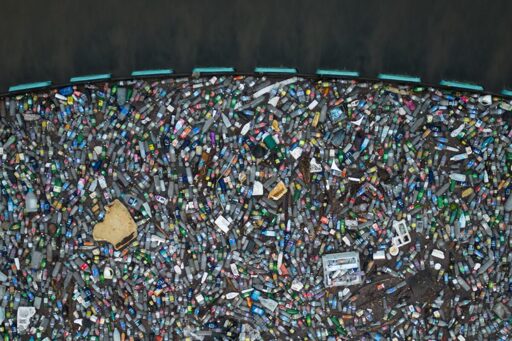Scientists have measured the amount of nanoplastics in the open ocean for the first time and found they make up the vast majority of marine plastic pollution. Plastic debris in the ocean can be of varying sizes. Nanoplastics are the tiniest, about 1,000 times smaller than the smallest microplastics — small enough to go through cell membranes, including the barriers of the human brain. The new study estimates that the North Atlantic Ocean holds approximately 27 million metric tons of nanoplastics, around nine times the amount of larger plastic debris in all of the world’s oceans. “The pollution is quite advanced,” co-author Dušan Materić, a researcher at the Institute for Marine and Atmospheric Research Utrecht, told Mongabay in a video interview. “Just 10 years ago, there was speculation about whether nanoplastics existed, and that brought concern because if they existed in the environment, they would be much more toxicologically potent than their microplastics counterpart.” The researchers found nanoplastics at all three depths they sampled — right from the sea surface to the ocean floor — across 12 stations located across the North Atlantic, indicating widespread contamination. Previously, nanoplastics were missing from calculations of how much total plastic is in the ocean. The millions of tons of nanoplastics found in the recent study, Materić said, fills that gap. “To me, [the amount of nanoplastics we found] is a bit more than I expected,” Materić said. “We are closing that budget with nanoplastics. So, in a sense, we discovered the missing pollutant.”…This article was originally published on Mongabay
From Conservation news via this RSS feed


